Top 10 mistakes of the beginning cannabis grower
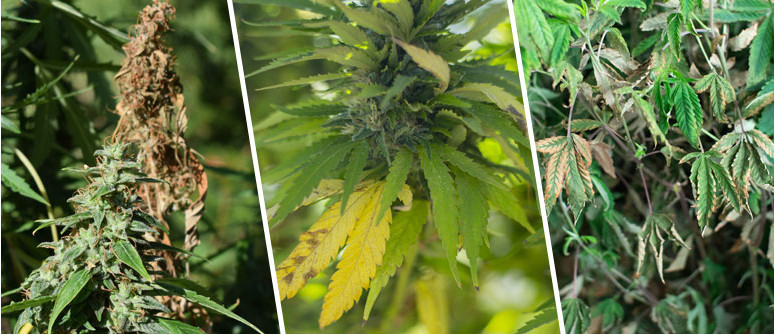
When growing cannabis it's easy to make mistakes. Read the Top 10 of most made mistakes by beginning cannabis growers at CannaConnection!
When growing cannabis it's easy to make mistakes. Read the Top 10 of most made mistakes by beginning cannabis growers:
1. USING BAD GENETICS
Just don't. No matter what your cultivation skills are like, if you buy cannabis seeds with poor genetics you are wasting your time.
Bad genetics can only take you so far, and no matter what your skill, you will not be able to take you marijuana beyond the low level of results that the seeds' genetics will determine – if they grow at all. Do some research into your seeds before you buy them. We cannot stress this enough.
2. USING STANDARD SOIL FROM YOUR GARDEN CENTER
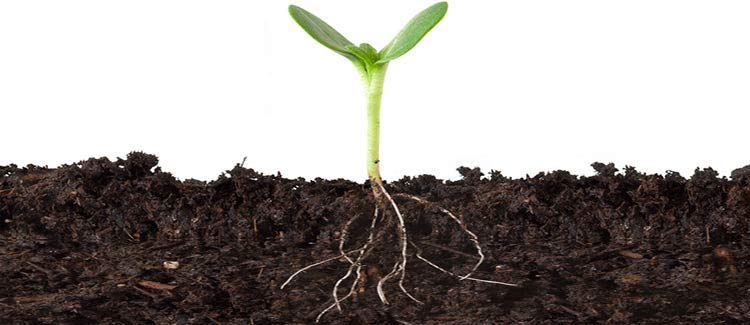
This is another easy mistake to make. Your cannabis plants need a specific balance of nutrients and a certain soil constancy to thrive, so giving them standard soil is not going to suffice.
Read up on exactly what nutrients your cannabis is going to need throughout its life, and what type of soils it will thrive in - making sure you buy a soil to suit. This also counts for germinating seeds and seedlings; whilst not essential, it is highly recommended to buy a special germination soil over standard.
Soil quality is crucial to a successful cannabis grow. One of the many common mistakes of beginner cultivators is overlooking the importance of obtaining soil with the correct composition of nutrients. Cannabis plants require a different ratio of nutrients throughout each phase of the grow cycle. Photoperiodic strains (cultivars that flower after a shift in the light cycle) tend to require a high level of nutrients overall. Although you will be feeding your plant throughout its life, it doesn’t hurt to start with soil that is rich in essential macronutrients nitrogen (N), phosphorous (P), and potassium (K), otherwise known as N-P-K. When shopping for soil, you’ll notice that almost every product is proud to state its ratio of these three nutrients.
If you’re growing autoflowering plants, it’s important to realize that they don’t need as much feeding, and thus require a different type of soil. A relatively nutrient-light mix of 3 parts compost, 3 parts peat moss, 2 parts perlite, and 1 part vermiculite will do the trick.
It’s not just the nutrients inside the soil that are important. Soil also serves as the foundation of your entire grow; it’s the substance that roots expand into, anchoring your plants to the ground. Make sure your soil has a light yet rich texture and crumbles easily in the hand. This means roots will have no problem growing through it, water will drain adequately, and oxygen will be able to reach the roots. If your soil is too dense and clay-like, roots won’t receive enough oxygen and water buildup will lead to pathologies such as root rot.
If you are finding it hard to locate good-quality soil, some strains are more forgiving than others.
3. GROW LAMPS HANGING TO HIGH/LOW
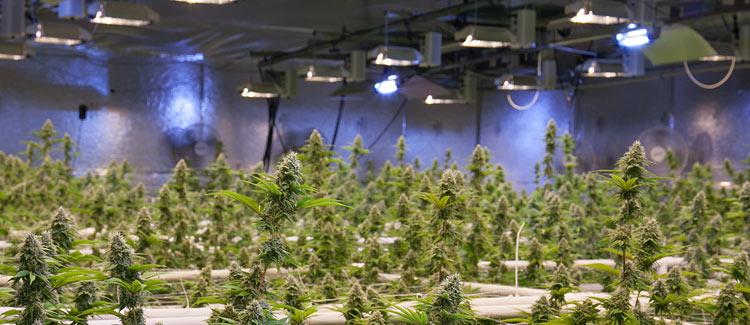
It is very important to make sure you have put your grow lamps at the correct height.
If they are too high than your cannabis plants are not going to get enough light to sate their appetite. This will cause them to expend much needed energy in a bid to grow towards the light.
It will result in thin, weak plants that may not be able to support their own weight, let alone the bud they will produce. This happens because they expend their energy trying to grow tall, instead of using it to grow healthy structural integrity.
Should your grow lamps be to low, your cannabis plants are going to become much too hot. This excess heat will eventually cause the leaves and bud of your cannabis to sustain burn damage.
4. OVER OR UNDER FEEDING YOUR CANNABIS
Cannabis plants are very sensitive to the amount of nutrients given to them. It is extremely easy for a novice to over or underfeed them.
Doing this will cause nothing but problems for your marijuana crop, so try to become as well informed about feeding your cannabis as possible. It is also essential to learn the telltale signs of an unhappy cannabis plant.
5. NOT FLUSHING YOUR CANNABIS PLANTS AT ALL
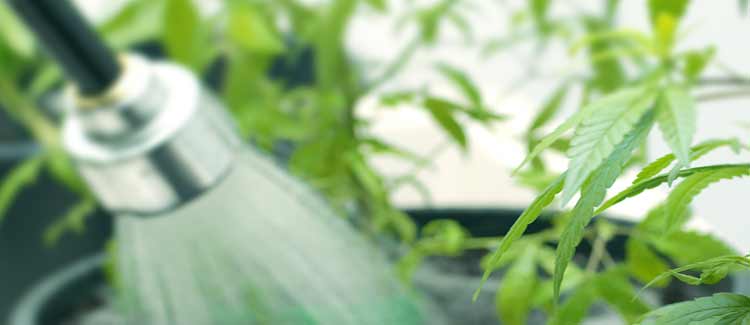
A lot of cultivators out there see flushing their cannabis plants as an emergency measure to deal with overfeeding and nutrient lockout; and they would not be wrong, performing a flush to deal with this can sometimes be essential. However, this has led to flushing being seen as something you should never do unless in the above situation.
This is not the case. Performing a flush at the correct time before you harvest your crop can dramatically improve the quality of marijuana gained as it will cause a detox of excess chemicals in the plant. It is important to read up on flushing your cannabis crop, gaining an understanding of how and when to do it.
6. HARVESTING YOUR MARIJUANA TOO EARLY OR TOO LATE
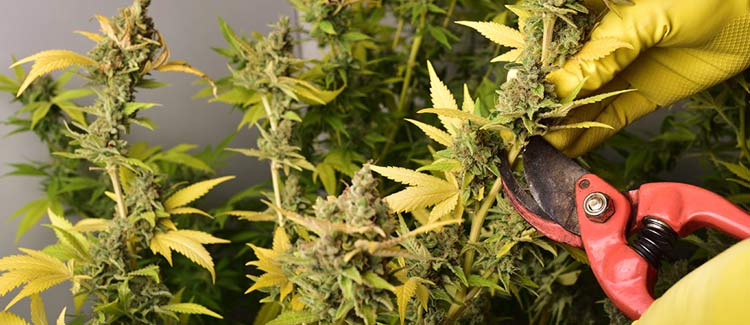
A successful harvest is all about timing; act too early or late and you run the risk of compromising all of your hard work. There are a few factors that will let you know if the time is right. You’ll get up close and personal with your plants to detect some of them, so having a magnifying glass to hand doesn’t hurt.
On the macro level, one thing to keep an eye on is yellowing of the fan leaves. This occurs as nutrients are directed toward buds during flowering, and will progress as you give your plants a final flush. Fear not, your plants aren’t dying, they’re simply getting closer to harvest!
When it comes to the micro-level, the pistils and trichomes are the main areas of interest. Trichomes are small, mushroom-shaped glands that produce terpenes and cannabinoids such as THC and CBD. Trichomes give buds that distinct frosty and crystalline look. Hold up a magnifying glass in front of a bud early on in the flowering phase, and you’ll notice these tiny glands have a translucent look to them. Eventually, the structures will begin to turn cloudy and eventually display an amber color. If you’re looking for more of a stimulating high, harvest your buds when most of the trichomes become cloudy. If you prefer stoning body highs, wait until the majority of trichomes have turned amber.
You’ll also need to keep an eye on the pistils, the fine hairs located on cannabis flowers. These will turn from white to orange as the flowers mature, and you’ll notice the buds slowing down growth as they do. Aim to harvest your crop when around 70–90% of these hairs have changed color, but be sure to verify with a "trichome test" too.
7. IGNORING SAFETY RULES
It may seem boring, but safety in your grow room is an extremely important factor to take into consideration. We have heard an untold amount of stories where grow rooms, even entire buildings, have been burnt down because of poor safety considerations.
You are going to have heat, water and electricity all within the same small area. It is very important that they do not mix!
Ensuring you have a safe layout, keep the area tidy, manage where cables run and taking extra care when watering your plants etc, will make the difference between years of fruitful cannabis growing, and ending up on the evening news as the idiot who burnt down his home growing weed.
8. INCORRECT PH LEVELS
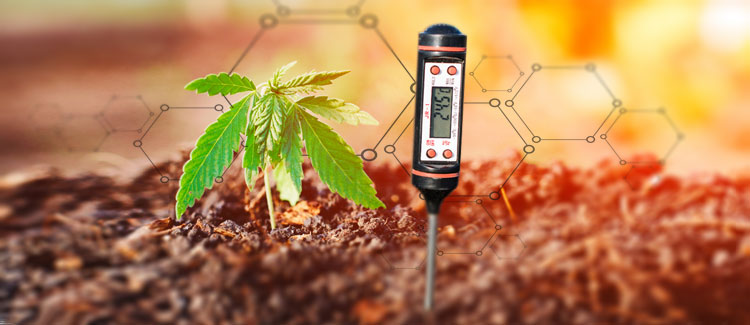
Cannabis plants require their grow medium to be of a certain pH for them to really thrive. Allowing the pH to stray outside the safe brackets can result in numerous problems for you and your cannabis. It is often the cause of nutrient deficiency, so if your plants are showing signs of a problem, always check the pH first before adjusting feeding schedules etc.
Having an understanding of the pH your cannabis plants require, and how to assess, manage and amend it are all very important – we recommend reading up on it in our guide.
9. NOT ENOUGH RESEARCH
All of the previous problems can be avoided if you have done your research. Cannabis growing is pretty easy and straight forward once you understand the details involved. It is first finding out those details though that is important and often overlooked; too many novices will rush in head first without any proper prep work, hoping for the best.
Knowledge is power – making sure you have as much as possible will forge you into a cannabis cultivator of worth.
10. TOO MUCH TALKING
Keep it quiet! Period. We understand that you are proud of your beautiful plants, and will want to brag to your friends about them, but unfortunately, the cultivation of cannabis is illegal in many countries around the world so it is best to keep it as quiet as possible.
The number one cause of cannabis growers getting caught is not from the police hunting them down or actively searching for them but through loose lips and the wrong people hearing about it, who in turn report it. Don't be one of these fools - don’t let anyone know who does not need to know, even your close friends.
.jpg)
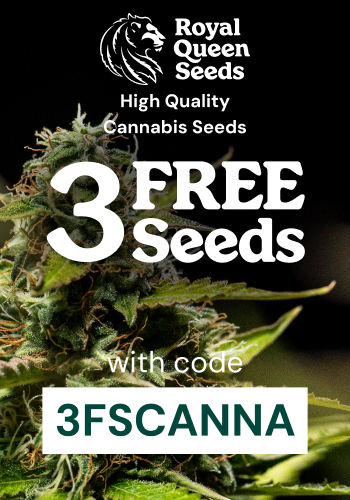

.jpg)
